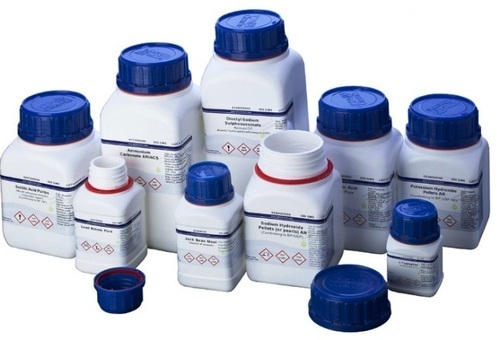Fertilizers
Fertilizers are “The products that improve the levels of the available plant nutrients and/or the chemical and physical properties of the soil, thereby directly or indirectly enhancing the growth, yield and quality of the plant ”. In other words Fertilizers are chemical substances supplied to the crops to increase their productivity. These are used by the farmers daily to increase the crop yield. The fertilizers contain the essential nutrients required by the plants, including nitrogen, potassium, and phosphorus. They enhance the water retention capacity of the soil and also increase its fertility.
Fertility of soil:
- Virgin Soil: It is the portion of the soil or land in which plants have not grown since long time. It is always fertile and good crop may be yielded due to elements present in it have not been used up by the plants as food.
- Exhausted Soil: It is the soil on which crop and after crop, especially of the same variety has been raised. The plants keep on absorbing the same elements for the soil and hence the soil becomes impoverished or an unproductive soil.Factors affecting the fertility of soil are as follows
- Nitrogen, phosphorus, potassium and other mineral salts
- The amount of fixed nitrogen
- pH value of the soil (7-8)
Characteristic features of good fertilizer
- Must be soluble in water.
- The element present in the compound must be easily available to the plant Should be cheap.
- Should not be toxic to plant .
- Should be stable for long time .
- Should maintain the pH of the soil in the vicinity of 7 to 8.
Benefits of Fertilizer
- Farming efficiency improvement
- Improvement of soil quality with adequate fertilization.
- Crop quality improvement
- Water conservation
Classification of fertilizer
Inorganic fertilizers are further classified in to
Indirect fertilizers: These fertilizers which are added to soil to improve its biological, chemical, or mechanical properties.
Example: limestone, ground dolamite (decreases soil acidity) and gypsum (increases salt content)
Direct fertilizers: These are fertilizers which contain the nutrient elements in the form of compounds which are directly taken up by the plants. These are further classified as nitrogenous, phosphatic, potash, magnesium,..etc.
N-type (Nitrogenous fertilizer): Those fertilizers which mainly supply nitrogen to the plants are called nitrogenous fertilizers.
Ex: Urea(H2NCONH2), Ammonium sulphate [(NH4)2SO4] and Ammonium nitrate (NH4NO3).
P-type (Phosphatic fertilizers): Those fertilizers which mainly supply phosphorus to the plants are called phosphatic fertilizer.
Ex: Super phosphate of lime [Ca (H2PO4)2.2CaSO4], Mono potassium phosphate(KH2PO4(0-52-35)).
K-type(Potash fertilizer): These are the fertilizers which supply K (Potassium) to plants.
Ex: Potassium nitrate (KNO3),Potassium chloride (KCl), Potassium sulphate (K2SO4).
Mixed fertilizer: Fertilizers containing more than one plant nutrient are called mixed fertilizers. Now a day instead of using a single fertilizer, a mixture of fertilizers containing N, P, and K are used.
Ex: Nitro phosphate containing murate of potash Ca (H2PO4)2.Ca(NO3)2 +KCl
Examples for NP, PK, KN, NPK fertilizers:
NP: Ammonium dihydrogen phosphate (NH4H2PO4), Ammonium hydrogen phosphate [(NH4)2HPO4]
PK: mixture of triple super Phosphate and Potassium sulphate.
NK: fertilizers containing both N and K (potassium nitrate)
NPK: fertilizers containing N, P, and K. Nitro phosphate with Potash
Based on physical nature fertilizers classified in to:
- Granular Fertilizer:Solid material that is formed into particles of a predetermined mean size.
- Coated Fertilizer: Granular fertilizer that is covered with a thin of a different material in order to improve the behavior and/ or modify the characteristics of the fertilizer.
- Liquid Fertilizer:A term used for fertilizers in suspension or solution and for liquefied ammonia.
- Powder Fertilizer:A solid substance in the form of very fine particles. Powder is also referred to as “no granular fertilizer” and is sometimes defined as a fertilizer containing fine particles, usually with some upper limit such as 3 mm nut no lower limit.
Compound Fertilizers:
The production and marketing of compound fertilizers are unique compared with commodity type fertilizers such as urea, ammonium phosphates and potash. Unlike commodity type fertilizers, compound fertilizers are usually manufactured (formulated) to meet local or regional crop requirements. Often, in addition to containing various ratios of the primary nutrients (N+P2O5+K2O), they contain certain secondary and micronutrients specific to the crop needs in a particular agro-climatic region.
Role of Compound fertilizer:
The decision to use compound fertilizers is usually driven by one or more of the following factors:
- Convenience.
- Crop nutrient needs.
- Government policy objectives.
- Economics.
Mixed fertilizer:
Mixed fertilizer typically refers to a fertilizer containing two or more of the elements of nitrogen, phosphorus and potassium (NPK) which are essential for promoting plant growth and high crop yields. They are obtained by thoroughly mixing the ingredients either manually or mechanically. NPK mixture fertilizers are formulated and recommended by agricultural scientists to enhance the output of crops by giving it specific and exclusive blend of plant nutrients. They are slow releasing by nature and remain in the field for a long time. They are made as per the soil and are crop specific.
Ex: Nitro phosphate containing murate of potash Ca (H2PO4)2.Ca(NO3)2 + KCl
Mixed fertilizers have a number of advantages, a few of them being:
The use of a fertilizer mixture leads to balanced manuring. It results in higher crop yield.
Being in granulated form, mixtures have a better physical condition and hence their application is easier.
Preparation /manufacture of some fertilizers:
Manufacture of Urea:
The urea NH2CONH2 manufacturing process as shown below,
Urea is produced from ammonia and carbon dioxide in two equilibrium reactions,
2NH3 + CO2 —> NH2COONH4 (ammonium carbamate)
NH2COONH4 —> NH2CONH2 + H2O
Step 1 – Synthesis
A mixture of compressed CO2 and ammonia at 240 b arg pressure reacted to form ammonium carbamate. This is an exothermic reaction, and Which is readily decompose to give urea.
Step 2 – Purification
The major impurities in the mixture at this stage are water from the urea production reaction and unconsumed reactants (ammonia, carbon dioxide and ammonium carbamate). The unconsumed reactants are removed.
Step 3 – Concentration
Urea solution is heated under vacuum, which evaporates off some of the water, increasing the urea concentration.In the evaporation stage molten urea is produced at 140°C.
Step 4 – Granulation
Urea is sold for fertilizer as 2 – 4 mm diameter granules. These granules are formed by spraying molten urea onto seed granules which are supported on a bed of air.The final product is cooled in air, weighed and conveyed to bulk storage ready for sale.
Manufacture of Ammonia
Ammonia is manufactured using The Haber Process which occurs in five stages
- Step 1: H2 and N2 are obtained from natural gas and the air respectively and are pumped into the compressor through pipe
- Step 2: the gases are compressed to about 200 atmospheres inside the compressor
- Step 3: the pressurised gases are pumped into a tank containing layers of catalytic iron beds at a temperature of 450°C. Some of the hydrogen and nitrogen react to form ammonia:
N2(g) + 3H2(g) ⇌ 2NH3(g)
- Step 4: unreacted H2 and N2 and product ammonia pass into a cooling tank. The ammonia is liquefied and removed to pressurised storage vessels
- Step 5: the unreacted H2 and N2 gases are recycled back into the system and start over again
Conditions
Temperature: 450ºC
A higher temperature would favour the reverse reaction as it is endothermic (takes in heat) so a higher yield of reactants would be made
If a lower temperature is used it favours the forward reaction as it is exothermic (releases heat) so a higher yield of products will be made
However at a lower temperature the rate of reaction is very slow
So 450ºC is a compromise temperature between having a lower yield of products but being made more quickly
Pressure: 200 atm
A lower pressure would favour the reverse reaction as the system will try to increase the pressure by creating more molecules (4 molecules of gaseous reactants) so a higher yield of reactants will be made
A higher pressure would favour the forward reaction as it will try to decrease the pressure by creating less molecules (2 molecules of gaseous products) so a higher yield of products will be made
However high pressures can be dangerous and very expensive equipment is needed
So 200 atm is a compromise pressure between a lower yield of products being made safely and economically
What are Fertilizers?
Fertilizers are chemical substances supplied to the crops to increase their productivity. These are used by the farmers daily to increase the crop yield. The fertilizers contain the essential nutrients required by the plants, including nitrogen, potassium, and phosphorus. They enhance the water retention capacity of the soil and also increase its fertility.
Types of Fertilizers
There are six different types of fertilizers that are mentioned below:
Inorganic Fertilizers
Inorganic fertilizers are chemical fertilizers that contain nutrient elements for the growth of crops made by chemical means. The inorganic fertilizers are of the following types:
Nitrogen Fertilizers
Nitrogen fertilizers contain nitrogen necessary for the development of crops. Nitrogen is the main constituent of chlorophyll that maintains a balance in the process of photosynthesis. It is also a part of amino acids in plants and constitutes protein. Nitrogen fertilizers improve the production and quality of agricultural products.
Phosphorus Fertilizer
The main nutrient in a phosphorus fertilizer is phosphorus. The efficiency of fertilizer depends upon effective phosphorus content, methods of fertilizing, properties of soil and crop strains. Phosphorus found in the protoplasm of the cell plays an important role in cell growth and proliferation. The phosphorus fertilizer is beneficial for the growth of roots of the plants.
Organic Fertilizers
Organic fertilizers are natural fertilizers obtained from plants and animals. It enriches the soil with carbonic compounds essential for plant growth. Organic fertilizers increase the organic matter content of the soil, promotes the reproduction of microorganisms, and changes the physical and chemical properties of the soil. It is considered to be one of the main nutrients for green food.
Organic fertilizers can be obtained from the following products:
- Agricultural Waste
- Livestock Manure
- Industrial Waste
- Municipal Sludge
Advantages of Fertilizers
The advantages of fertilizers are mentioned below:
- They are easy to transport, store, and apply.
- For supplying a specific nutrient we can select a specific fertilizer due to its nutrient specific nature.
- They are water-soluble and can easily dissolve in the soil. Hence, they are easily absorbed by the plants.
- They have a rapid effect on the crops.
- They increase the crop yield and provide enough food to feed the large population.
- They are predictable and reliable.
Disadvantages of Fertilizers
Fertilizers have the following disadvantages:
- They are expensive.
- The ingredients in the fertilizers are toxic to the skin and respiratory system.
- Excessive use of fertilizers damages the plants and reduces soil fertility.
- Leaching occurs and the fertilizers reach the rivers causing eutrophication.
- Long term use reduces the microbial activity and disturbs the pH of the soil.




